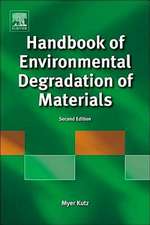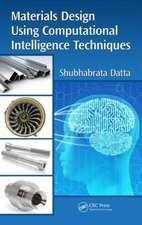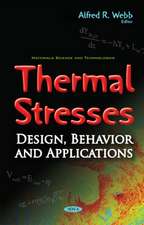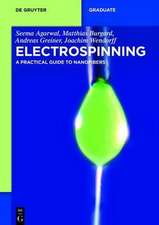Theory and Practice of Contrast: Integrating Science, Art and Philosophy
Autor Mariusz Stanowskien Limba Engleză Paperback – 26 aug 2024
The book also has a high degree of integration/complexity, although each chapter introduces a new issue. The last chapter: "Binary Model of the Universe" draws attention to the need for including in physics the analysis of our mind and the resulting new possibilities, which include the mentioned (digital) model of the universe. Despite the difficult issues raised here, this study is written in accessible language and may be interesting not only for scientists and academics.
| Toate formatele și edițiile | Preț | Express |
|---|---|---|
| Paperback (1) | 434.32 lei 43-57 zile | |
| CRC Press – 26 aug 2024 | 434.32 lei 43-57 zile | |
| Hardback (1) | 786.23 lei 43-57 zile | |
| CRC Press – 10 iun 2021 | 786.23 lei 43-57 zile |
Preț: 434.32 lei
Nou
Puncte Express: 651
Preț estimativ în valută:
83.13€ • 85.67$ • 70.18£
83.13€ • 85.67$ • 70.18£
Carte tipărită la comandă
Livrare economică 03-17 martie
Preluare comenzi: 021 569.72.76
Specificații
ISBN-13: 9780367774394
ISBN-10: 0367774399
Pagini: 224
Ilustrații: 104
Dimensiuni: 156 x 234 mm
Greutate: 0.41 kg
Ediția:1
Editura: CRC Press
Colecția CRC Press
Locul publicării:Boca Raton, United States
ISBN-10: 0367774399
Pagini: 224
Ilustrații: 104
Dimensiuni: 156 x 234 mm
Greutate: 0.41 kg
Ediția:1
Editura: CRC Press
Colecția CRC Press
Locul publicării:Boca Raton, United States
Public țintă
Academic, Postgraduate, and ProfessionalCuprins
Contents
Foreword....................................................................................................................ix
About the Author.......................................................................................................xi
Introduction............................................................................................................. xiii
Chapter 1 Beauty—Existing Views.......................................................................1
Chapter 2 The Concept’s Origin............................................................................5
Chapter 3 Analysis of Contrast..............................................................................7
Chapter 4 Analyses of Contrasts in Abstract Visual Structures.......................... 11
Chapter 5 Contrast as Complexity....................................................................... 21
Chapter 6 Contrast as Compression of Information............................................ 31
Chapter 7 Contrast as Development..................................................................... 35
Chapter 8 Contrast as Value................................................................................. 37
Chapter 9 Examples of Contrasts in Artworks.................................................... 39
Chapter 10 Interpretations of Existing Aesthetic Views........................................83
Chapter 11 Contrast and Colour............................................................................97
Chapter 12 Emergence as Contrast...................................................................... 113
Chapter 13 Contrast and Subjectivity.................................................................. 119
Chapter 14 Contrast as Cognition........................................................................ 121
Chapter 15 Mind-Body Problem.......................................................................... 131
Chapter 16 Artificial Intelligence, Self-awareness and Creativity...................... 139
Chapter 17 Contrast as Being.............................................................................. 151
Chapter 18 Contrast and Perception of Reality................................................... 159
Chapter 19 Definition of Information.................................................................. 163
Chapter 20 Binary Model of Universe................................................................. 169
Chapter 21 Conclusions....................................................................................... 195
Index....................................................................................................................... 201
Foreword....................................................................................................................ix
About the Author.......................................................................................................xi
Introduction............................................................................................................. xiii
Chapter 1 Beauty—Existing Views.......................................................................1
Chapter 2 The Concept’s Origin............................................................................5
Chapter 3 Analysis of Contrast..............................................................................7
Chapter 4 Analyses of Contrasts in Abstract Visual Structures.......................... 11
Chapter 5 Contrast as Complexity....................................................................... 21
Chapter 6 Contrast as Compression of Information............................................ 31
Chapter 7 Contrast as Development..................................................................... 35
Chapter 8 Contrast as Value................................................................................. 37
Chapter 9 Examples of Contrasts in Artworks.................................................... 39
Chapter 10 Interpretations of Existing Aesthetic Views........................................83
Chapter 11 Contrast and Colour............................................................................97
Chapter 12 Emergence as Contrast...................................................................... 113
Chapter 13 Contrast and Subjectivity.................................................................. 119
Chapter 14 Contrast as Cognition........................................................................ 121
Chapter 15 Mind-Body Problem.......................................................................... 131
Chapter 16 Artificial Intelligence, Self-awareness and Creativity...................... 139
Chapter 17 Contrast as Being.............................................................................. 151
Chapter 18 Contrast and Perception of Reality................................................... 159
Chapter 19 Definition of Information.................................................................. 163
Chapter 20 Binary Model of Universe................................................................. 169
Chapter 21 Conclusions....................................................................................... 195
Index....................................................................................................................... 201
Notă biografică
Mariusz Stanowski graduated from Warsaw University of Technology (1974), and Fine Arts Academy in Warsaw (1979), where he worked later as an academic teacher and designer. Currently he is a visual artist and an independent researcher. His scientific research is situated on the borderline between humanities and natural sciences, including: philosophy, art theory, cognitive science, theory of information/complexity and physics. As an artist, through paintings, defined as deconstructed, he tries to express the idea of creativity. He has exhibited in Poland and abroad, including Vikingsberg Museum of Modern Art, (Helsingborg, Sweden), Charlottenborg Palace (Kobenhavn, Danmark), and the Visual Art Museum - School of Visual Arts (New York, USA).
Recenzii
The book "Theory and Practice of Contrast" shows that investigating the
foundations of our knowledge is not idle and that it is possible to
consider fundamental issues in a constructive way, providing concrete
solutions and benefits. The lack of such research today is the cause of
stagnation in many fields. I believe that this book will help to draw
attention to that problem and unleash our intellectual potential, which
is blocked and cannot be realized in the current (superficial) paradigms.
Professor Zofia Rosińska-Zielińska Warsaw University,□ Department of Philosopy
The book "Theory and Practice of Contrast" shows that investigating the
foundations of our knowledge is not idle and that it is possible to
consider fundamental issues in a constructive way, providing concrete
solutions and benefits. The lack of such research today is the cause of
stagnation in many fields. I believe that this book will help to draw
attention to that problem and unleash our intellectual potential, which
is blocked and cannot be realized in the current (superficial) paradigms.
Professor Zofia Rosińska-Zielińska Warsaw University,□ Department of Philosopy
The book, entitled "Theory and Practice of Contrast: Integrating Science, Art and Philosophy," written by Mariusz Stanowski and published by CRC Press, introduces systems thinking and logic into the underlying foundation of the general knowledge.
The most basic concepts introduced here are those of contrast, complexity, and emergence in very general terms. In particular, the concept of contrast explains what a relationship a system’s elements are general in - the interactions of the elements’ features that are either common or differentiating. It is from contrast(s) that complexity and emergence appear naturally. By treating complexity in reality as a binary structure, this concept is expectedly applicable to any system if the system’s structure can be binarily coded. As well noted, emergence represents one of the very central properties of systems investigated in systems science (Lin et al., 2012). It reflects how macro-level properties emerge out of micro-level elements, none of which possesses the macro-properties. Currently, this systemic concept is confronting the community of macroeconomists in their exploration on how macroeconomic phenomena could and should be rooted in microeconomic agents (Vines & Wills, 2018).
Because the complexity of a system can be objectively identified with value (according to Mr. Stanowski), the introduction of common and differentiating features enables quantitative analysis of relations between elements of a system. Related to Aristotle’s claim (Lin, 1999) that "the whole is more than the sum of its parts," Mr. Stanowski provides an explanation for why it is that "the whole" (system) is "more than the sum of its parts." Specifically, the "more" here stands for the emerged new features of the system when the component parts are combined into a whole, even though these parts do not possess the features. For a different while similar explanation of this Aristotle’s claim, see Lin and Fan (1997).
Dr. Jeffrey Yi-Lin Forrest, professor of mathematics, economics, finance and systems science; President of the International Institute for General Systems Studies.
References
Lin, Y. (1999). General Systems Theory: A Mathematical Approach. Plenum and Kluwer Academic Publishers.
Lin, Y., Duan, X.J., Zhao, C.L., & Xu, L.D. (2012). Systems Science: Methodological Approaches. CRC Press, ISBN-10: 1439895511, ISBN-13: 978-1439895511.
Lin, Y., & Fan, T.H. (1997). The fundamental structure of general systems and its relation to knowability of the physical world. Kybernetes: The International Journal of Systems and Cybernetics, 26 (3), 275-285.
Vines, D., & Wills, S. (2018). The rebuilding macroeconomic theory project: An analytical assessment. Oxford Review of Economic Policy, 34(1-2), 1-42.
foundations of our knowledge is not idle and that it is possible to
consider fundamental issues in a constructive way, providing concrete
solutions and benefits. The lack of such research today is the cause of
stagnation in many fields. I believe that this book will help to draw
attention to that problem and unleash our intellectual potential, which
is blocked and cannot be realized in the current (superficial) paradigms.
Professor Zofia Rosińska-Zielińska Warsaw University,□ Department of Philosopy
The book "Theory and Practice of Contrast" shows that investigating the
foundations of our knowledge is not idle and that it is possible to
consider fundamental issues in a constructive way, providing concrete
solutions and benefits. The lack of such research today is the cause of
stagnation in many fields. I believe that this book will help to draw
attention to that problem and unleash our intellectual potential, which
is blocked and cannot be realized in the current (superficial) paradigms.
Professor Zofia Rosińska-Zielińska Warsaw University,□ Department of Philosopy
The book, entitled "Theory and Practice of Contrast: Integrating Science, Art and Philosophy," written by Mariusz Stanowski and published by CRC Press, introduces systems thinking and logic into the underlying foundation of the general knowledge.
The most basic concepts introduced here are those of contrast, complexity, and emergence in very general terms. In particular, the concept of contrast explains what a relationship a system’s elements are general in - the interactions of the elements’ features that are either common or differentiating. It is from contrast(s) that complexity and emergence appear naturally. By treating complexity in reality as a binary structure, this concept is expectedly applicable to any system if the system’s structure can be binarily coded. As well noted, emergence represents one of the very central properties of systems investigated in systems science (Lin et al., 2012). It reflects how macro-level properties emerge out of micro-level elements, none of which possesses the macro-properties. Currently, this systemic concept is confronting the community of macroeconomists in their exploration on how macroeconomic phenomena could and should be rooted in microeconomic agents (Vines & Wills, 2018).
Because the complexity of a system can be objectively identified with value (according to Mr. Stanowski), the introduction of common and differentiating features enables quantitative analysis of relations between elements of a system. Related to Aristotle’s claim (Lin, 1999) that "the whole is more than the sum of its parts," Mr. Stanowski provides an explanation for why it is that "the whole" (system) is "more than the sum of its parts." Specifically, the "more" here stands for the emerged new features of the system when the component parts are combined into a whole, even though these parts do not possess the features. For a different while similar explanation of this Aristotle’s claim, see Lin and Fan (1997).
Dr. Jeffrey Yi-Lin Forrest, professor of mathematics, economics, finance and systems science; President of the International Institute for General Systems Studies.
References
Lin, Y. (1999). General Systems Theory: A Mathematical Approach. Plenum and Kluwer Academic Publishers.
Lin, Y., Duan, X.J., Zhao, C.L., & Xu, L.D. (2012). Systems Science: Methodological Approaches. CRC Press, ISBN-10: 1439895511, ISBN-13: 978-1439895511.
Lin, Y., & Fan, T.H. (1997). The fundamental structure of general systems and its relation to knowability of the physical world. Kybernetes: The International Journal of Systems and Cybernetics, 26 (3), 275-285.
Vines, D., & Wills, S. (2018). The rebuilding macroeconomic theory project: An analytical assessment. Oxford Review of Economic Policy, 34(1-2), 1-42.
Descriere
The book Theory and Practice of Contrast completes, corrects and integrates the foundations of science and humanities, which include: theory of art, philosophy (aesthetics, epistemology, ontology, axiology), cognitive science, theory of information, theory of complexity and physics.












